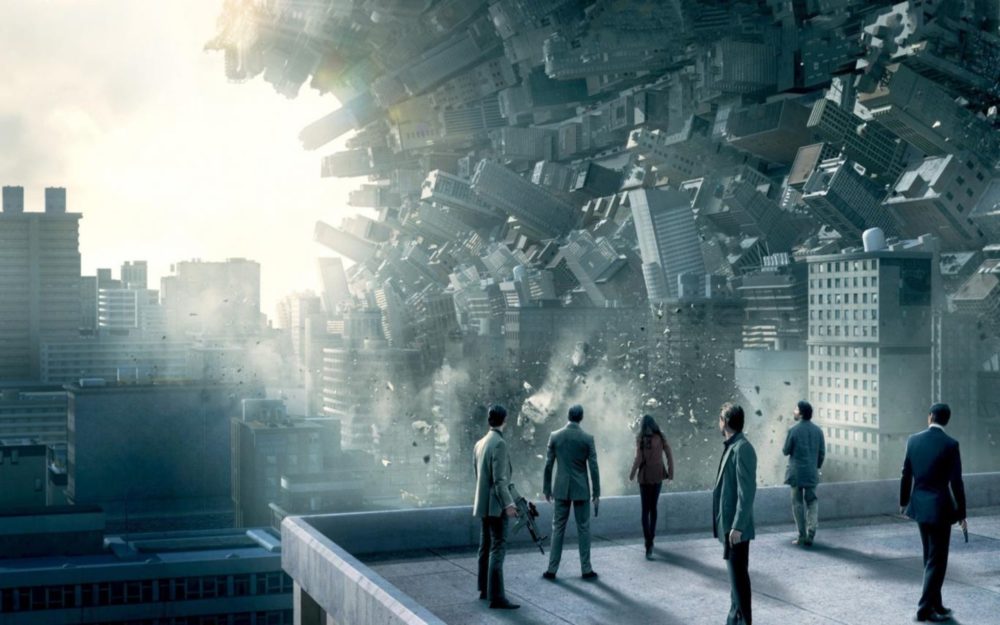Whenever I build a story, I am more interested in the ways it can be told – uniquely. The ‘what’ of a story is not very enthralling in its own capacity; only the ’why’ and ‘how’ of the story makes it more interesting for the writer as well as the audience.
When an idea populates in my head, I would first evaluate whether the idea is ‘simple’ or ‘sophisticated’.
1. If a story idea is simple, the screenplay can be mind-bending.Example: Memento, Eternal Sunshine of the Spotless Mind, Requiem for a Dream, Gone Girl, 500 Days of Summer 2. If a story idea is unique and intense, the screenplay can be simple.
Example: Jurassic Park, E.T., Blade Runner, Inception (let’s go meta here)
[There’s a third kind in which Directors like to go on full blazing. These films might become cult-classics but rarely rake in money at the box-office. Let us not go there now. Example: 2001: A Space Odyssey, Pulp Fiction, The Fountain, Cloud Atlas, Primer]
I learned it from the filmmakers like Steven Spielberg and Mani Ratnam, who have always told complex stories via simple characters/set up. Films with a sophisticated story or structure certainly offer a lot of satisfaction as the audience tend to re-watch and dissect them, to understand the subtext and metaphors. But, if you tell a complex story (with strong/complex characters) using a puzzling screen-narrative, it would be very difficult for the audience to get what’s going. Unless the audience revisit the film multiple times, they will not be able to grasp or enjoy all the aspects/nuances of the film.
So, when I heard the line about how they could succeed with the inception, from Eames (played by Tom Hardy):
“What you have to do is start at the absolute basic. The relationship with the father.”
I started wondering how the film is an allegory to filmmaking itself.
Planting an idea in someone’s mind = Storytelling for impact
Shared dream = Movies
Let me elaborate on that:
1. Few characters try to plant an idea in someone’s mind, making him change his decision.Allegory: Actors/characters in a story/film play their defined roles, on screen, to create a cathartic experience. This communicates a beautiful/emotional story that plants itself in the audience’s mind, that could have a lasting impact. 2. The team decides to go with the simplistic version of the idea to ensure the inception succeeds. They translate their idea into an emotional concept.
Allegory: You might have a great story, fantastic cinematography and unique characters, but the audience will be able to connect better with the story only if the key characters and the emotions they undergo in the film, are simple and relatable. 3. The team designs several layers of dreams in order to infiltrate the mind and plant an idea. The key rule is to do it without the audience noticing it immediately.
Allegory: A story has several layers and each layer either complements the central plot or disputes it, thereby creating a compelling range of subplots and arcs. This helps the story and its theme stick with the audience’s mind. The themes/subtext shouldn’t be on their face; it should be subtle. 4. Mal and the failure of the previous inception will not let Cobb proceed with his perfect plan.
Allegory: Irrespective of how well-planned the actions are, the past failures of the story writers would always come back to haunt them, stopping them from proceeding further. 5. If you’re stuck in the limbo and you don’t realise it, you will be there forever.
Allegory: If writers wait for inspiration and procrastinate endlessly, they would never be able to create the best of their works. 6. But, in the end, they need to plunge into the limbo to complete their objectives.
Allegory: Make the artists go to places they are afraid to go (or you are afraid to make them go). This will put them through a life-changing experience and give them the best arc they can achieve, for effective storytelling.
So, what do you think? Am I reading too much between the lines? What do you think is the doctrine of the film?
